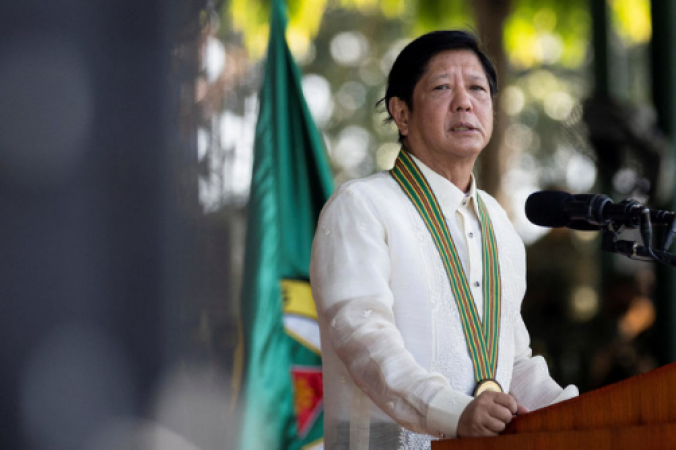
Manila: In spite of China's vehement opposition and threat that it would "drag the Philippines into the abyss of geopolitical strife," President Ferdinand Marcos Jr. defended his decision to allow a larger American military presence in the country on Wednesday as necessary for territorial defence.
Early in February, the Marcos administration declared that, in addition to the five local bases already designated under a 2014 defence agreement between the longtime treaty allies, rotating batches of American forces would be permitted to remain indefinitely in four additional Philippine military camps.
Without going into further detail, Marcos stated that the four new sites, some of which are in the northern Philippines, would soon be announced. Chinese officials are furious about that location because it would give US forces a staging area close to southern China and taiwan.
Also Read: ODI World Cup 2023 in India to start on Oct 5, final in Ahmedabad
To better counter China, including in any future conflict over Taiwan, the Biden administration has been fortifying an Indo-Pacific arc of military alliances. The American actions complement those made by the Philippines to strengthen its territorial defence in the midst of a long-running dispute in the South China Sea, primarily with China.
Without going into further detail, Marcos stated at a press conference that US forces would also be permitted to remain in the western province of Palawan, which faces the South China Sea, as part of the Enhanced Defense Cooperation Agreement.
In response to a question, he emphasised that the actions were intended to strengthen the nation's coastal defence and said that local Filipino officials' opposition to the US military presence had been overcome.
Also Read: Earthquake in Pakistan, Afghanistan; 12 killed
The majority of those who had objections had changed their minds "to support the idea of an EDCA site in their province," Marcos said. "We explained to them why it was important that we have that and why it will actually be good for their province."
Marcos has the right to decide, but Cagayan province's governor Manuel Mamba is still opposed to allowing American forces to remain in the region with their weapons in up to two military camps.
He had previously expressed concern that allowing the Americans to base in Cagayan, which is across the Taiwan Strait, Taiwan, and Southern China, could make his province a key target for the Chinese military in the event that a conflict involving the US military breaks out over Taiwan.
The president makes the decision, not me, Mamba said. Nevertheless, I continue to oppose any foreign forces stationed in my province. However, I oppose EDCA sites in my province.
According to US and Philippine officials, the building of barracks, warehouses, and other facilities for US forces and contractors would create much-needed local jobs and stimulate the economy. The US presence would improve the Philippines' combat readiness, assist in responding to natural disasters, and help deter Chinese aggression in Asia.
China, however, has frequently charged that the United States is attempting to militarily contain Beijing and dividing relations between Beijing and its neighbours in Asia, such as the Philippines.
According to a recent statement from the Chinese embassy in Manila, "creating economic opportunities and jobs through military cooperation is equivalent to quenching thirst with poison and gouging flesh to heal wounds.
Such cooperation, in the long run, "will seriously jeopardise regional peace and stability, drag the Philippines into the depths of geopolitical conflict, and harm its economic development."
On the country's western coast, which faces the South China Sea, and in its northern Luzon region, which is across the sea from the Taiwan Strait, US forces have increased and broadened joint training with Filipino troops, focusing on combat readiness and disaster response.
Also Read: Google has finally released Bard, its AI-powered chatbot, in response to OpenAI's ChatGPT
The allied forces will conduct one of their largest combat drills, called Balikatan Tagalog for shoulder-to-shoulder and including live-fire drills, the following month. According to the Philippine military, one planned manoeuvre involves US and Philippine forces firing rockets at a mock enemy ship in South China Sea-facing waters to sink it.
If the ship-sinking exercise goes as planned, China, which virtually owns the entire strategic waterway and has converted seven disputed reefs into missile-guided island bases to defend its territorial claims, is likely to become incensed.